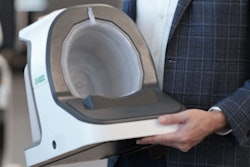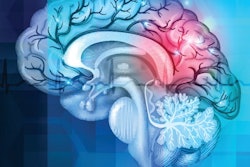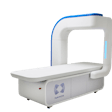
Recent advances in medical imaging technology have the potential to transform global healthcare, saving and improving the lives of millions. A new era of accessibility is underway, thanks to innovative portable and miniaturized imaging equipment enhanced with decision-support functionality driven by artificial intelligence (AI).
 Ron Weinberger, PhD.
Ron Weinberger, PhD.Combined with oversight from expert teleradiologists, these advances have the potential to reduce disparities in healthcare across and within nations. There are also a range of medical imaging technologies that are increasingly user-friendly and can be operated by a wide range of healthcare professionals with the appropriate training. This will be critical in areas where there continue to be a shortage of diagnostic imaging specialists and technicians, particularly in resource-limited countries or settings.
So how will the confluence of these technological advancements come together to help solve healthcare disparity challenges?
We know that imaging plays a critical role, providing vital information to resolve up to 80% of diagnostic problems, enabling evidence-based intervention.
For example, stroke disproportionately affects people from low- and middle-income nations and those located in rural and lower socioeconomic strata areas within developed nations. People from disadvantaged backgrounds are also more likely to have poorer outcomes.
Enabling effective treatment within the "golden hour" after stroke events can drastically improve patient outcomes, as has been demonstrated by many mobile stroke unit studies throughout the world.
Novel electromagnetic-based imaging technology aims to provide timesaving, cost-effective, and portable brain scanning in both prehospital and in-hospital settings to rapidly image and distinguish ischemic and hemorrhagic stroke. This technology has an important potential role alongside CT or MRI in stroke care to allow greater access to rapid neuroimaging wherever CT or MRI are not accessible or practical, whether that is by the hospital bedside or in a prehospital setting.
In other areas of clinical practice, AI-supported imaging is showing potential to improve the detection and diagnosis of cancers and cardiac disease, among other conditions.
The evolution of ultrasound has led to the development of probes that can plug into an internet-enabled device and, together with integrated AI, can create a low-cost diagnostic ultrasound scanner with wide-ranging applicability.
The ability of point-of-care ultrasound to produce diagnostic images quickly, noninvasively, and cost-effectively, regardless of the patient's location, has truly been a game changer. However, when it comes to neuroimaging, due to the strong attenuation and distortion of ultrasound waves interacting with the skull, time-sensitive neurological emergencies like stroke require a different approach.
When this advanced equipment is readily available, people will be able to have a medical imaging procedure and receive diagnostic information wherever they live. We now see a future in which neuroimaging tools are miniaturized such that a diagnosis will be possible in an ambulance or in the field. This will drive improved healthcare outcomes, reducing the burden of disease and healthcare system costs by enabling earlier diagnosis and intervention.
In the U.S., there are more than 36,000 radiologists. In the 43-million-strong population of Kenya, there are 200. And in Liberia? Just two. Increasingly, AI-supported tools, while requiring further clinical validation for many applications, are showing promise to address healthcare resource constraints.
Trained on large datasets, AI and deep-learning solutions can highlight cases with the highest need, differentiate disease states, and augment rapid decision making. Paired with expert teleradiology, this has the potential to help overcome specialist skill gaps.
Innovation in medical imaging is accelerating at a rapid pace, potentially forging a new path to minimize disparities in healthcare. Considered approaches to imaging technologies are bringing truly transformative tools to the market that are affordable, accessible, and achievable. AI-supported, portable medical imaging capabilities are available now. This can provide unprecedented access and healthcare support to previously underserved populations.
Ron Weinberger, PhD, is CEO of EMVision Medical Devices.
The comments and observations expressed are those of the author and do not necessarily reflect the opinions of AuntMinnie.com.



















